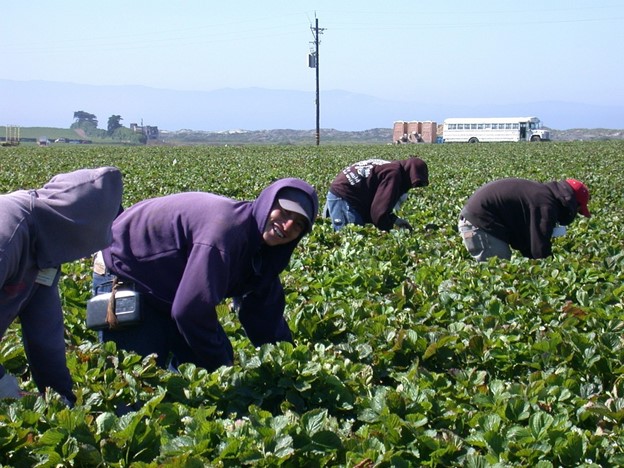Regenerative Agriculture (RA)
While the debate rages on the efficacy of GMOs to provide sustainable production in agriculture, many producers have chosen to embrace organic farming practices in addition to returning to regenerative methodologies to increase crop production. The wider production sectors have realized that the future of food production is much more than increased production, but of robustness of species, wellness, medicine, and ethical science. Agriculture and food production professionals are embracing changes in the way producers look at sustainability for the future. It is this vision that has propelled interests in the methods of sustainability as a new approach to farming that will ably transform the industry for much greater flexibility and efficiency. Collection and analysis of data obtained from satellites, equipment sensors, logs/records provide the blueprints that is used to track fertilizer applications, crop health, and planting cycles. The aim is to improve the business like never before, and ably manage the major contributors that improve production efficiency. This approach looks at fertilizer applications, water use and cycle, climate, and management of critical eco-systems.
Regenerative Agriculture is practiced at some level in all agricultural regions and refers to any outcome-based food production system that nurtures, restores, maintains optimal soil health, protecting ideal climatic conditions, biodiversity, local flora, ecosystems, and water resources. It enhances farming practices, productivity, and profitability. The key practices are:
- Promotion of biodiversity via cover crop applications, crop rotation.
- Elimination of, or decreased tillage practices.
- Reduced use of artificial fertilizers and improved application of biodegradables such as compost.
- Application and use of robust grazing management for livestock.
- Fallowing: Fallow lands where possible to allow rest and regeneration/restoration. Lands are taken out of crop production for a period of specified time (3-5 years). This allows for nutrient buildup and the re-establishment of key cycles to improve soil microbial proliferation.

Regenerative Techniques:
- Agroforestry Systems
- Hydroponics
- Aquaponics
- Regenerative Grazing
- Regenerative medicine
The aim of regenerative agriculture is to create farm production systems that work in a harmonious manner with nature while improving the quality of life for all stakeholders. It is often asked “What is the difference between GMOs and Regenerative agriculture?”.
Throughout history there have been many ways to feed the world. However, many leading agencies have sought to push the narrative that only through GMOs, hybrid seeding, and the use of agrochemicals can a sustainable supply of food be produced. The chemical corporations and genetically modified engineering entities ensured high profitability for their stakeholders. This concept was highly profitable, as proprietary GMOs were presented as patented life forms with technology fees in excess of 40% were realized compared to non-GMO seeds that farmers could no longer save. Chemical corporations’ products like glyphosate, dicamba, atrazine, and 2,4-D allow them to amass billions in profits annually. Shareholders were naïve yet quite happy to be repeatedly told that these chemicals were safe and effective. The fallout came about when homeowners, food establishments, and healthcare entities became aware of the actual science, and mounted protest via parades across the country and around the world. Millions signed petitions, demonstrated, sent letters to food companies, and stopped buying GMO foods. Sales for organic surged. The former Board President of Moms Across America, Laurie Olson, stated, “When we first started marching in 4th of July parades (2013) one out of 50 people knew about GMOs. Now, five years later (2018), one out of 50 don’t know about GMOs. I am proud to be a part of that process.”
Recognition of the adverse effect of genetic engineering practices on food consumption drove the choice for organic farming practices, and hence the resurgence of restorative technologies and practices in agriculture. While GMOs are regulated, Regenerative Farming is not, even though a certification model has been developed to give producers of regenerative production the choice to label its produce. The Regenerative Organic Certification or ROC gives the farmers a new way to ensure that wholesome farming practices are adhered to since many organic farmers were in fact guilty of using farming practices that were in violation of healthy alternatives. The concept and hence the philosophy of this farming practice is to examine all aspect of the agricultural systems and serve to apply holistic principles that restore soil and ecosystem health, address inequity, and leave our land, waters, and climate in better shape for future generations.
The Principles of Regenerative Agriculture
The science of restorative farming practices is not new and has been practiced across a myriad of cultural environments by earlier settlers. In every country, region, and culture, there is evidence of such practices. The dynamics was often ignored as nomads were able to move from one place to the other in search of food. Settlements were at best temporary, with little or no need to apply modern farming technologies. The urbanization of countries/regions brought into focus the need for the Industrial Agricultural Systems created to increase food production that streamlined supply chains with practices that promote soil erosion, inundate the environment with harmful chemicals, and polluted ecosystems. Farming and animal raring in harmony with nature is the philosophy that separates regenerative farming from other agricultural practices to ensure not only products, but utilization of the landscape to maintain ecosystems, recharge soil nutrient content, and maintain optimum elemental cycles.


As an imperative, it should be noted that the topic of regenerative food system is not applicable only to farming/agricultural systems, but is a philosophy embraced across the spectrum of the food production industry to include fisheries (marine & fresh water), cattle raring/animal husbandry, poultry, agroforestry, etc.
https://ota.com/market-analysis/organic-purchasing

6 thoughts on “Sustainable Agricultural Production: GMO’S vs Regenerative Practices.”
Everyone loves what you guys are usually up too. This sort of
clever work and reporting! Keep up the awesome works guys I’ve incorporated you guys to my personal blogroll.
Valuable information. Lucky me I discovered your web site by chance, and I am shocked why this accident did not happened earlier!
I bookmarked it.
You are so awesome! I don’t suppose I’ve truly read through a
single thing like this before. So good to discover somebody with
genuine thoughts on this subject matter. Really..
thank you for starting this up. This website is something that’s needed on the internet, someone
with a bit of originality!
Wow, marvelous blog layout! How long have you been blogging for?
you make blogging look easy. The overall look of your web site is wonderful, let
alone the content!
Hi Dear, are you actually visiting this site on a regular
basis, if so then you will absolutely get pleasant knowledge.
Rattling great information can be found on website. “I believe in nothing, everything is sacred. I believe in everything, nothing is sacred.” by Tom Robbins.